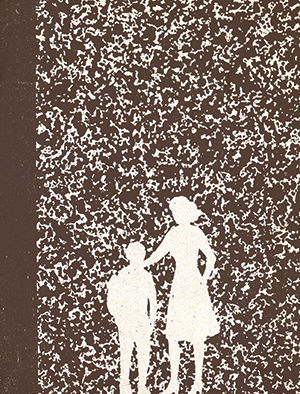
I admit I was irked three years ago when my son—then in the second grade and still the bluest-eyed, palest-skinned kid you’ll ever meet—announced that he wanted to be called Francisco. Francis, the name we gave him at birth, and Frankie, the nickname he wore so adorably, were both out.
I already had endured hours of my boy futilely trying to gel his curly hair into a fauxhawk and talking like a lame version of Speedy Gonzales, which drove me insane. “Talk like yourself,” I’d say. (What I meant, I guess, was talk like me.) “I am,” he’d insist.
Of course he was. Kids mimic each other, and Frankie was in full-blown parrot mode. Garden Hills Elementary, his public school of some 700 students nestled in a Buckhead neighborhood as white as my son, is more than two-thirds Hispanic, with many of the kids of Mexican descent. And that itself is a considerable dip from when “Francisco” first surfaced and before redistricting bussed around 100 kids living in an apartment complex on Buford Highway to another Buckhead school, Frankie’s best friend among them.
The name change did finally prompt me to ask myself some tough questions: Why was I getting so worked up? So what if my kid wanted to try on being one of his Hispanic classmates for a day, a month, even a year? After a lot of self-reflection, I still don’t know the answers, and maybe I don’t want to just in case I am not as color-blind a person as I think I am. I do know that when I let Frankie be Francisco, I began to see my son’s world and school in a different light—a brighter one, a truer one.
When my kids first started at Garden Hills, I used to see poor immigrant families from cramped apartments across from the Lindbergh MARTA station or off of Cheshire Bridge Road—places I was at first reluctant, and ashamedly so, to let my kids go for sleepovers. Now I see parents who work two, three, sometimes four jobs so their kids can have a better life in this country. I see moms who don’t have cars walking several miles, or spending what little money they do have on taxis, to attend parent-teacher conferences because they believe education is the ticket to that better life.
I used to see those kids without great English skills and wonder if they would hold my kids back. What I now see are children hanging on to a teacher’s or classmate’s every word so they can learn my language—kids like the one in my daughter’s class, who, after only a few weeks in this country, won an award for mustering up the courage and the English to ask permission to go to the bathroom. My kids find those kids downright inspirational.
I used to see school CRCT test scores that paled in comparison with the ones at some of the other public schools on the north side. I now look at different scores, the ones that show how much Garden Hills’ dynamic principal and teachers move the student achievement needle in a year, and we rock those.
I used to look at the big new houses at the end of our street with envy. I now see our yellow three-bedroom ranch through the lens of Frankie’s friends from the apartments—a veritable palace with a huge yard. I still would like a bigger house, but everyone in my family, including my children, has learned to appreciate what we have a little more.
I used to walk into Garden Hills Elementary and see brown and white kids. Now I just see students, Hispanic and otherwise, researching the American Civil War, dividing decimals, memorizing the periodic table, learning lines from Macbeth for the school play, battling mercilessly on the soccer field for bragging rights.
I used to see all the “neighborhood families”—code for the white families who live within walking distance of the school—who would never consider Garden Hills because of the lopsided demographics, and I’d think they knew something that I didn’t. I now see those families and think they are missing out.
A school mom I know likes to say, “Garden Hills is for every child. It is not for every parent.” That first day of school five years ago, I wasn’t sure it was for me. My husband and I held Frankie’s and his twin sister Mary Louise’s hands as we entered the picturesque seventy-five-year-old redbrick and white-columned building. We deposited our kids in their classrooms, among a puddle of white students, a puddle of black, and a sea of brown. My immediate thought was, “What have I done?”
The question wasn’t really driven by the presence of so many Hispanic kids as much as it was by the absence of white kids who swim at the pool, horse around on the soccer field, or, ironically, eat at Jalisco Mexican Restaurant in Peachtree Battle Shopping Center every Friday night. “We all ask ourselves that question that first day,” confessed a mom with two kids now at Sutton Middle School. “Then our kids have this phenomenal experience at Garden Hills, both academically and in terms of exposure to kids of all different types of backgrounds.”
I wish I could say exposure to other cultures, or even my commitment to public school education, were the reasons my twins are at Garden Hills. While I do value those things, the reality is, my family can’t swing the private schools that so many “neighborhood kids” now attend. When my husband bought our house more than twenty years ago, the student population of Garden Hills Elementary was what we considered the epitome of diversity: one-third white, one-third black, one-third “other.” (I’m not quite sure if the “other” would agree.)
The neighborhood has become increasingly wealthy. A lot of the kids on Frankie’s club soccer team go to Atlanta International School, the site of the old North Fulton High School that shares a walkway with Garden Hills. It also costs around $21,000 a year. Not that all the private school parents have that kind of money either, according to what they—or their children—tell me. One of Frankie’s friends told us that his parents scrape by so he can go to a good school, a real school, not a school like Garden Hills. After he jumped out, I looked Frankie in those crystal blue eyes of his and said, “I send you to Garden Hills because I hate you.” He laughed out loud.
I understand why private school parents have a hard time considering any Atlanta public school. The cheating scandal tarnished Garden Hills and every other school that did nothing wrong. To reenroll my kids, I have to sign an affidavit swearing that I live in the school district. The notary from Sandy Springs literally said, “As if you would lie about that.” On the favored north side, the fiasco that played out this fall with the principal at the glistening new North Atlanta High School—he’s out, he’s in, he’s out, he’s in—was nothing short of an Abbott and Costello routine and a colossal embarrassment.
It was during the heated redistricting battle when I learned how little some parents from other public schools on the north side think of Garden Hills. We don’t want your kids, they said at meetings in not-so-veiled language, and we sure as hell aren’t coming to your school. Now that stung.
When my kids are all mushed up with theirs at Sutton next year, I might be in for a rude awakening. But I believe my kids have been challenged academically in every way. Frankie, who declared in kindergarten that school was the creation of adults who hated kids, has had teachers at Garden Hills who motivated him to read books he didn’t want to read, win science fairs he didn’t want to enter, grasp math concepts he didn’t think he was capable of.
Francisco has morphed back into Frankie because, in the end, he is who he is. But at a tender age, he chose to know what it was like to walk in someone else’s shoes. I am a different person, a better person, because of it.
This article originally appeared in our April 2014 issue under the headline “An education.”









![The North Carolina Museum of Natural Sciences’ newest exhibit is a [pre]historic first](https://cdn2.atlantamagazine.com/wp-content/uploads/sites/4/2024/04/DD-3-100x70.jpg)




